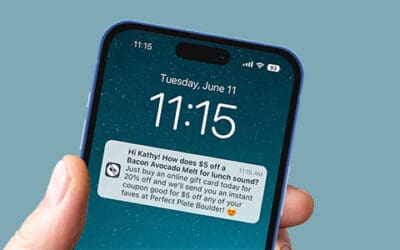
What Is The Best Marketing Conversion Tool?
Let’s start by helping you understand what makes up a behavior. Anything we do in our lives is a behavior, whether it is purchasing a new item, cleaning the house or meeting a friend for lunch. Understand that each decision and specific action we take is a behavior. Human behavior is made up of three things: our motivation, which needs to be a fairly high degree, our ability to perform the behavior and our need for a specific prompt to nudge that behavior into action.
I’ve described the foundational elements of a behavior to clients many times. When these elements are applied to marketing, those clients will often cite SEO as the best example for converting a customer’s behavior. While it is a great example, it’s not the best.
What makes SEO so good, is that it is at the bottom of the marketing funnel. A consumer has already filtered down the funnel to a point where, in theory, they are ready to buy something. In reality, much of the online search people do is actually a part of their research process. While this may demonstrate intent, it’s not an actual conversion to a sale. It is simply researching. Furthermore, this ‘researching behavior’ can happen many times over before an actual purchase is made if at all. Most brands will focus on the conversion of a handful of searches that click on the link but as a percentage of overall search volume, the conversion rate is actually quite small.
However, there is one tool already in your customers hands that allow, on a percentage basis, for an extremely high conversion rate. It’s the smart phone—by far the greatest marketing device ever invented. Along with a brand’s native app, it can factor in a customer’s desire to take action and consider their location to do so. This is the basis for the behavioral algorithm behind LighthousePE. It’s a simple code that calculates a customer’s motivation, their ability to perform said behavior and then generates a prompt to spur action. Unlike SEO, every interaction is based on historical implicit and explicit behaviors. That is what makes it such an effective marketing conversion tool.
Generally, this is where someone will ask me if this behavioral approach manipulates the consumer. I can tell you with the upmost certainty it does not. This is because in behavioral science it is impossible for someone to perform a behavior they don’t want to perform. What LighthousePE can do is help customers do what they already want to do, but in a far more effective way.
Let’s look at it like this: Our phones are practically an appendage. They are with us day and night. When a person has a brand’s app downloaded on their phone, they already have an elevated level of brand affinity. Their motivation to interact with that brand is extremely high to say the least. When you factor in location data, it significantly increases a customer’s ability to perform a behavior. The last piece of the puzzle to a high conversion rate is simply the prompt. In most cases it takes the form of a push notification.
Because those behavioral elements are coming together at the perfect moment, it is not unusual to recognize 25% conversion rates with any behavior-based campaign. That is what makes up Proximity Engagement. In terms of conversion, it is Proximity Engagement that is far more effective than any other marketing channel.
If you’re ready to build the kind of brand loyalty and sales brands dream of through Proximity Engagement, contact us to discuss how your brand can benefit from this crucial marketing approach.
You may also be interested in
How the Right AI Can Expand the Casino Player Experience
Most casinos aren’t fully embracing AI, and, in turn, they’re missing opportunities to take care of their existing players and outpace their competition. Unrealized potential awaits—from enjoying the benefits of a true attribution channel to delighting players with...
How AI Automation Will Drive Mobile App Marketing Success
As much as we may hate to admit it, our smartphones and the apps on them have become an essential part of our lives. We use them for everything. They help us order food, shop, bank, and be entertained. Consider this fact: Last year, the number of holiday purchases...
Drive Business Growth Through the Power of Push Notifications
Have you ever received a push notification on your phone that grabbed your attention? Perhaps it was a discount code from your favorite store or an alert about an event you were keen on attending. The key factor that made it stand out among the clutter on your lock...
Overcommunicating with Your Customers Is Worse than Not Communicating at All
It recently hit me that I’ve been getting tons of emails and push notifications from brands. I started monitoring it. When I realized how bad some of the communication was, I got frustrated and started unsubscribing. And that’s what brought me here: overcommunicating...






